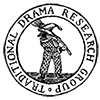In 1831, as part of the notes to the revised edition of his novel The Pirate, Sir Walter Scott included an account of the sword dance from the island of Papa Stour, Shetland, which he had obtained from Dr. James Scott who noted that it was “written about the year 1788” (Walter Scott 1831: 271). This dance is often viewed as an isolated Scottish example of an English circular sword dance. In 1774 and 1778 Thomas Pennant, the naturalist and travel writer, provided the Reverend George Low (1747-1795) financial assistance to tour Orkney and Shetland and record the natural history and culture. Pennant also offered to assist with publishing Low’s Tour in the Islands of Orkney & Schetland 1774 & 1778 but, upon receiving it, he extracted the material for use in one of his own books. Prior to Low’s death much of his Tour..., and other manuscripts, were used without acknowledgment by Pennant and others. Upon Low’s death his manuscripts went mostly to George Paton, but were later dispersed when Paton died in 1807. It was not until 1879 that Joseph Anderson produced a very heavily edited edition of the Tour... which omitted several key passages dealing with cultural traditions (Low 1879). Using Low’s manuscript of the Tour..., this paper examines his notes on Shetland dances and in particular an account of a sword dance being performed on the Shetland mainland, which indicates that the Papa Stour dance was potentially part of a wider dance tradition.
Conference:
Third Mummers Unconvention - Symposium 2013
Abstract:
File(s):
